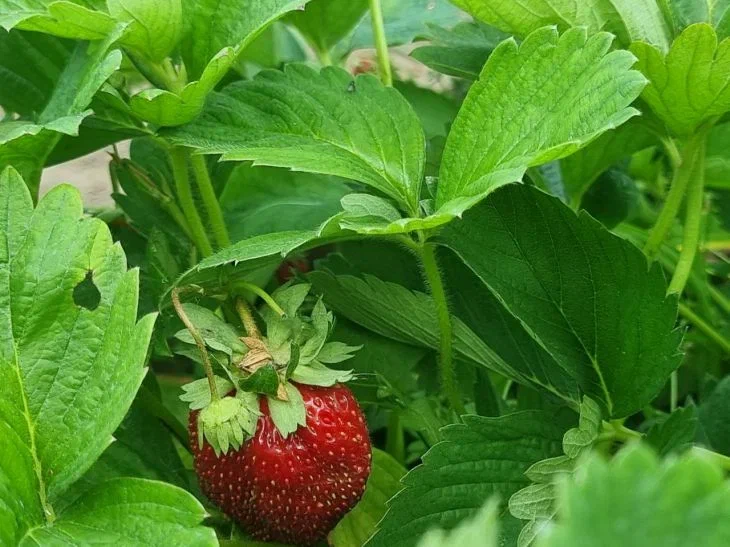What Grows Well Next to Strawberries: Secrets of Ideal Neighborhood in the Garden
Strawberries, a berry beloved by many gardeners, can become a real pearl of the garden with the right approach to its cultivation.
One of the key factors for a successful harvest is the correct selection of neighboring plants.
A skillful combination of crops not only saves space on the plot, but also promotes mutual improvement of growth, protection from pests and diseases, and increased yield.
Properly selected companions for strawberries can turn an ordinary bed into a real paradise, where each plant will feel comfortable and bring maximum benefit.
The best vegetable neighbors for strawberries
Among the vegetable crops that go well with strawberries, garlic occupies a special place. Its strong aroma repels many pests, including aphids and spider mites, which often attack strawberry bushes.

In addition, garlic releases substances that help improve the taste of berries.
Onions are also a great companion plant for strawberries, sharing similar protective properties.
Spinach and lettuce are ideal neighbors for strawberries in the spring. These fast-growing crops have time to produce a harvest before the strawberries begin to actively grow and require more space. In addition, their leaves create a natural mulch for the soil, retaining moisture and preventing weed growth.
Legumes to help strawberries
Peas and beans are excellent neighbors for strawberries due to their ability to enrich the soil with nitrogen.
These plants fix atmospheric nitrogen using nodule bacteria on their roots, making it available to other crops.
Strawberries are known to need nitrogen to grow vigorously and produce abundant fruit, so planting them next to legumes can greatly improve their yield.
Aromatic herbs - protectors of strawberries
Many herbs not only taste great with strawberries, but they also make great companions in the garden.
Basil, thyme and mint use their aromas to repel harmful insects and attract beneficial pollinators.
Additionally, these herbs often have compact root systems, so they don't compete with strawberries for nutrients in the soil.
Flower companions
Marigolds are not only a bright decoration for a strawberry bed, but also an effective means of combating nematodes, which can seriously damage the root system of strawberries.
Calendula is also a great neighbor, attracting beneficial insects and repelling pests with its strong aroma.
Nasturtium is another great companion for strawberries. Its bright flowers attract pollinators, and its spreading leaves create a natural shelter for the berries, protecting them from direct sunlight and birds.
Unexpected but effective neighbors
Radishes and horseradish may seem like strange neighbors for strawberries, but in fact, this is a very successful combination.
They grow quickly and manage to produce a harvest before the strawberries begin to actively grow. In addition, their roots loosen the soil, improving its structure for strawberries.
Spinach and clover can act as living mulch for strawberries, retaining moisture in the soil and suppressing weed growth. Clover, like other legumes, also enriches the soil with nitrogen, which has a positive effect on the growth of strawberries.
Plants to Avoid
Despite the many good neighbors, there are crops that are best not to plant next to strawberries. These include cabbage, eggplant, and potatoes. These plants can attract pests and diseases that are dangerous to strawberries, and also compete with them for nutrients in the soil.
Proper planting planning that takes into account plant compatibility can greatly improve the health and productivity of your strawberry patch.
By experimenting with different combinations, gardeners can create a harmonious and productive ecosystem in their garden, where each plant will support and complement each other.
Earlier we told you what to do if tomatoes on the bushes don’t turn red.
